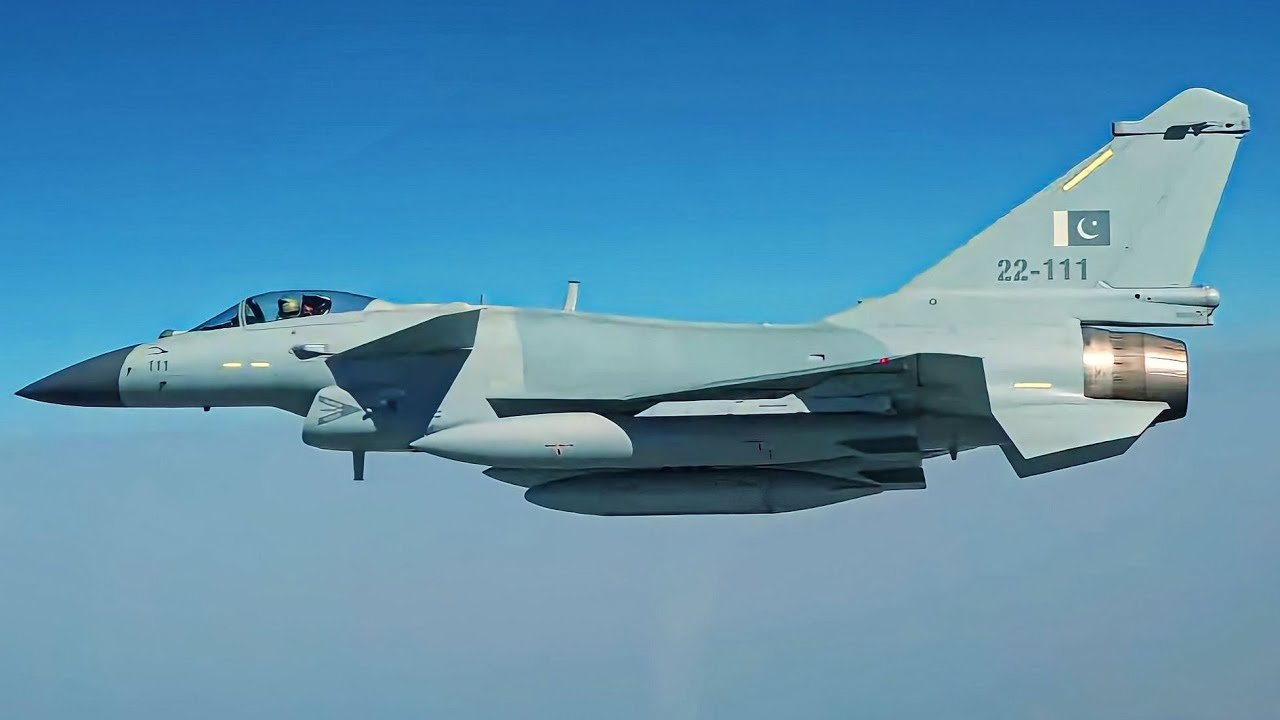The latest, and one of the biggest and longest aerial battles between Pakistan and India, saw Pakistan Air Force (PAF) pilots shoot down six state-of-the-art Indian fighter jets, an engagement that has sent shockwaves through defense analysts and industries worldwide. The battle, which has put the latest fighter jets and technology to the test, will influence the future doctrine, training, procurement, research, and development in technology among defense users and producers.
The dogfight that erupted between the PAF and IAF on May 7, 2025, probably the largest aerial battle since WWII, involved around 125 state-of-the-art fighter jets. It was a contest of technology developed by multiple defense contractors and human skills, featuring the scale and sophistication of French Rafale jets, Chinese-made jets (possibly J-10C), PL-15E missiles, Russian-origin Su-30s, MiG-29s, as well as other jets and radars. The use of next-gen missiles, highly sophisticated electronic systems, fighter jets, and human skills made this engagement a case study for different stakeholders.
The combat between Pakistan and India, featuring a mix of indigenous fighter jets, missiles, radar systems, and more, has become a pivotal moment for the global defense industry, military training regimens, deterrence, and doctrines. Global defense producers, military analysts, and air forces are analyzing this encounter as more details and data pour in.
The real combat between high-tech jets and other equipment has provided the ground to test the defense technologies developed by different manufacturers. This battle has provided the opportunity to analyze the real performance data of each missile launch, radar lock, reaction time, and countermeasures, which was not available in peacetime drills or simulations.
Although technology is important, the human factor also played a big role. The skills and training of pilots remained decisive. This has highlighted the difference in pilot training, operational readiness, and philosophies that are incorporated in the Pakistan Air Force and the Indian Air Force.
Read More: Why a Mediator Is Indispensable in Pakistan-India Face Off
The pilots of PAF and IAF are both professional and go through rigorous and combat-focused training, but what differentiates these forces is that IAF pilots have to struggle with issues like bureaucratic inertia, high accident rates, and maintenance backlogs. Although India invests heavily in modernization, there is a huge gap between training and operation.
Air Forces around the world are gathering data to study and evaluate the outcomes of this engagement to reassess their own training programs. The integration of artificial intelligence will become a top priority as more data becomes available to train these artificial models. The goal may be to train pilots to exploit the full capabilities of the jets they fly and quickly adapt to real combat.
The ongoing Ukraine war and the current Pakistan-India conflict have provided an opportunity for the quick feedback loop between the defense industry and the battlefield. Air forces worldwide are digging deep into these engagements to enhance their war strategy, while the defense industry is gathering data to improve their products.
Reports, pilot debriefs, and technical information will help upgrade missiles, radars, avionics, etc. This will also ensure the interconnectedness of the global defense industry. The reliance of these air forces on equipment from different sources has reflected that the world has fluid alliances and supply chains.
The air battle between Pakistan and India is a wake-up call for the world’s militaries—no defense system is perfectly secure, and even the most advanced jets and missiles can be defeated by superior tactics, training, force concentration, and collaboration.
The pace of technological advancements was already high, but current dynamics and changing scenarios worldwide have pumped more fuel into the engine for speedy development and deployment. Nations that fail to invest in next-generation systems and continuous improvement will lag behind and need to rely heavily on allies.
Read More: Top Indian Defense Official Admits Loss of Jets in Clash with Pakistan
Apart from technical lessons, the conflict will hugely influence defense policies related to procurement. There will be a visible acceleration in R&D among defense manufacturers, further underscoring competition among aerospace producers. The recent market share shifts toward the East have put Western defense manufacturers on their toes.
It is likely to see a strategic shift, especially in South Asia, toward pilot training, AI integration into aerial combat exercises, and network combat exercises to prepare for a high-tech warfare environment. There is a motivation for the world’s militaries to evolve their doctrines under the shadow of recent developments.
This conflict has also impacted civil aviation and airspace management. Airlines avoiding conflict zones are rerouting, increasing operational costs, which will eventually be shifted to passengers, and raising air ticket prices. The civil aviation industry will increase the budget allocation towards R&D, highly accurate navigation systems, and resilient technologies.
The civil aviation industry is becoming a huge factor in geopolitics, as risks associated with route planning, fleet safety, and insurance costs influence market dynamics. This requires strategic realignment in the global aerospace industry. Pakistan’s operational use of Chinese technology may encourage the civil aviation industry to consider Chinese technology for civilian usage. There will be an increase in the mutual R&D projects between China and Pakistan and will also boost Western interest and investment in Chinese technologies.
Overall, there is an expected increase in defense budgets, focusing on aerospace capabilities, stealth technology, missile technology, electronic warfare, and pilot training. While geopolitical rivalry will intensify, opportunities for collaboration between allied nations and local markets will also arise. This conflict has put South Asia on the brink of nuclear war, but it has also brought an opportunity to sit together and resolve the underlying issue of Kashmir.
Countries worldwide are developing regional markets, providing their populations and future generations with a peaceful environment and quality of life. Indian warmongers must realize that conflict will only bring destruction to the region, and no one stands to gain from war. Only by resolving the core issue of Kashmir and giving the right of self-determination to the Kashmiri people, this region can achieve peace and prosperity.

Amar Masood
Amar Masood is the CTO of Pakistan Taekwondo Federation and coaches the Pakistan National Taekwondo Team since 2006. He holds the Prestigious title of “Pakistan Color” for having represented the country at the international level. He is also an MPhil Student of Public Policy.



